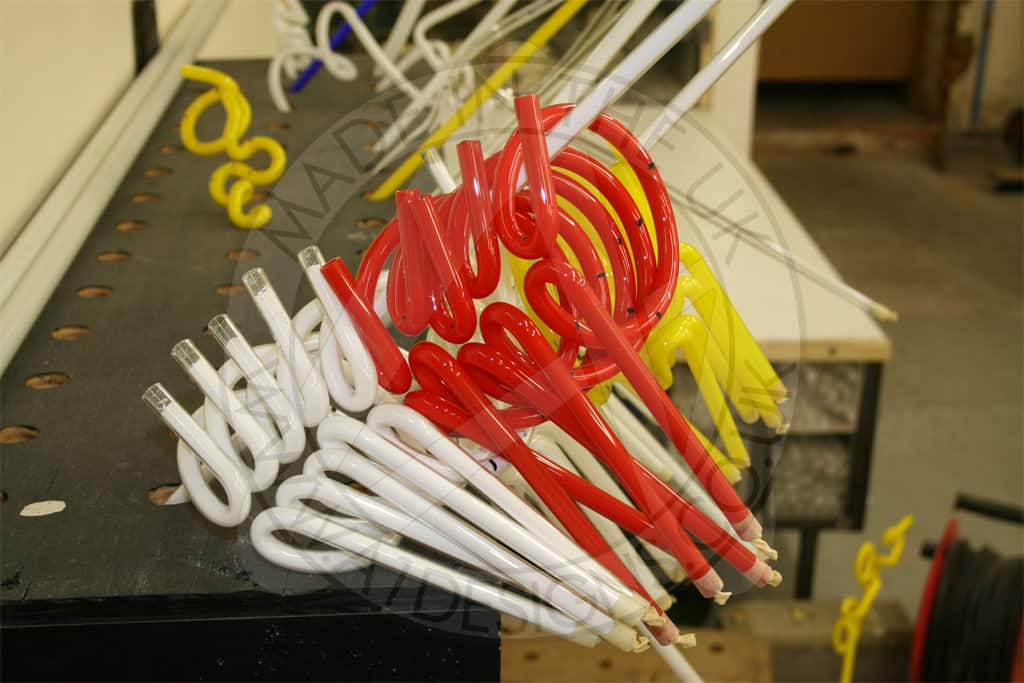
Neon offers a bespoke way to enhance any environment with a glow that’s not just visually captivating but also fully recyclable, durable, and immensely versatile.
It’s steeped in heritage. A Frenchman by the name of Georges Claude first started producing neon as a by-product to their air liquefaction process in 1900. He then demonstrated the first lamps in 1910 at the Paris Motor Show by showing 2 lengths of 12-metre-long bright red neon tubes for the first time.
How neon works in detail
A neon lamp is, essentially, a glass tube filled with neon or argon gas – ‘noble’ gases. These are the gases which are inert or un-reactive.
The atoms of inert gases will rarely form stable molecules by chemically bonding with other atoms; by inert gases, we mean helium, argon, xenon and, of course, neon. Although this is the case, it isn’t difficult to create a gas discharge tube – like that of a neon light.
To reveal that inertness is a relative matter, an electric voltage should be applied to electrodes at the ends of a glass tube containing the inert gas. When this is done, the tube containing the inert gas will begin to glow. When the tube is switched off, it will contain only ordinary atoms of neon gas.
When the light is switched on, the voltage will pull the neon atoms apart, causing electrons to become positively charged ions. Being positively charged, the neon ions will move towards the negative electrical terminal at one end of the tube. The negatively charged electrons that remain will go the other way, towards the positive terminal at the other end of the tube. As the excited atoms, electrons and ions bounce around in all directions, they constantly collide with one another, creating enough energy to give off photons of red light in the case of neon and blue light in the case of argon.
Due to the rate in which the atoms, electrons and ions collide with one another, a constant buzzing of red or blue light is emitted from the tube. When this happens, energy can also be emitted as heat, not just light. Neon lights can get rather hot when in small diameter tubing, but they are still safe to use.
The discovery and addition of phosphors to tubes and the use of the inert gas argon has allowed the creation of many different colours. In fact, it’s possible to create over 150 different colours, with little limit as to what can be achieved when it comes to signage or artwork.
Check out more of our articles here. And please drop us a line if you’d like to chat about any of the details we’ve covered or to find out more about neon sign safety.